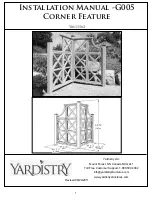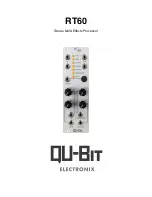
Installation
Overload LED
The multicolor Overload LED alerts you that
the probe speci
fi
cations are being exceeded.
The Overload LED alert conditions are:
Glowing red. The maximum continuous
input current limit has been exceeded
Glowing orange. The safe operating
temperature of the probe has been
exceeded
Flashing red and orange. Both the
maximum continuous input current limit
and the safe operating temperature of the
probe have been exceeded
NOTE.
The probe will shut down if you exceed
the safe operating temperature. To reset
the probe, disconnect the probe from the
oscilloscope, let it cool, and then reconnect it.
Quick Tip
An input current overload can magnetize the
probe. Always degauss the probe after an
overload.
10
TCP0150 Current Probe Instruction Manual
Summary of Contents for TCP0150
Page 1: ...TCP0150 20 MHz 150 A AC DC Current Probe Instruction Manual www tektronix com 071 2251 00...
Page 4: ......
Page 8: ...Table of Contents iv TCP0150 Current Probe Instruction Manual...
Page 66: ...Specifications Figure 4 Probe dimensions 50 TCP0150 Current Probe Instruction Manual...
Page 98: ...Repair Figure 5 Replaceable Parts 82 TCP0150 Current Probe Instruction Manual...
Page 100: ...Repair 84 TCP0150 Current Probe Instruction Manual...
















































